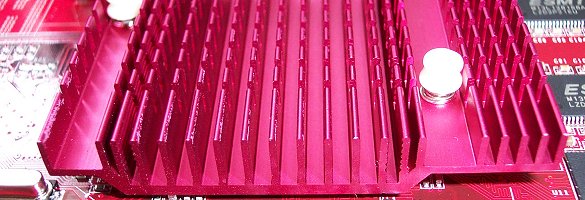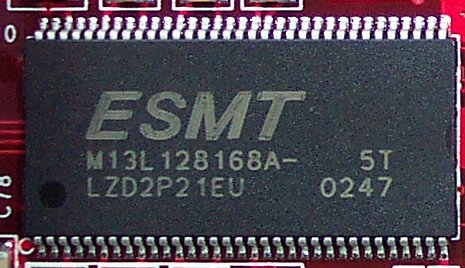Appearance and bundle
Almost every decent consumer-level graphics accelerator runs off the AGP port. There's very good reason for that, too. The AGP affords far more bandwidth than a standard 32-bit 33MHz PCI bus. Now that 8x AGP transfers have become common standard, cards enjoy up to 2133MB/s of bandwidth between the motherboard and GPU. Contrast that with 133MB/s for the PCI bus. Of course, even powerful, high-end cards don't necessarily lose a great deal of performance when being forced down to 4x AGP (1066MB/s), but a 133MB/s transfer limit will undoubtedly become a performance-inhibiting factor. Whether that's the case with a GPU that's not exactly pushing back the boundaries of pixel-pushing power remains to be seen. Still, 133MB/s isn't enough to service the kind of triangle throughput that modern CPUs and decent graphics cards can generate and handle, but can the FX5200 even muster enough muscle to saturate the PCI bus. We'll find out in the benchmark section.
Let's have a look at the card now.

The card's low-end origins are plain to see. A small PCB size, bare RAM chips and passive heatsink all point to budget beginnings. The PCI slot interface, too, is indicative of low power cards, for the bus cannot sustain midrange cards with healthy wattage requirements.

Gainward's in-house styling invades the cooler. The pink aluminium heatsink, completely passive, is a low-profile affair. 250MHz core speed isn't pushing back the envelope of 0.15-micron manufacturing, though. The cooler comes away when you push the two white, spring-loaded pins through the back of the card.

Similarly, 400MHz DDR isn't cutting edge stuff, but we'll do well to remember that this is a budget card. 64MB of TSOP DDR400-rated memory (5 nanosecond) line the right-hand side of the card. We've now seen system RAM hit DDR500+ speeds recently, so DDR400 running on a graphics card is pretty old hat. There's little need for Gainward to apply any RAMsinks to this card. All that'll do, really, is push up the price, something Gainward cannot afford to do with respect to the price the card will have to come in at - around £55.

Connectivity options, as much as performance, is what potential buyers will be looking for. A PCI interface means one of two things. Firstly, it's for users who's PC is bereft of the now ubiquitous AGP slot and therefore have to resort to using PCI-based cards. Secondly, it's for those who want some extravagant multi-monitor support, and we're talking of more than two monitors here, as both ATi and NVIDIA have comprehensive single-card multi-display support. DVI is a pretty important inclusion, and the card's TV-Out ability is a definite selling point in the £50 market. The card can output up to 1024x768 on the TV-Out feed and up to 1600x1200x32 from the DVI-I interface.

Bundle-wise, it's pretty sparse, as you would expect on a budget card. Gainward does the right thing by bundling a DVI-to-VGA converter, and a small lead allows one to change the S-Video output to a standard RCA (coaxial) plug. The single driver CD contains Gainward's EXPERTool v3.09, which allows the card overclocking. Please note that this isn't a Golden Sample model. Those cards offer a guaranteed overclock on both the GPU and memory. DirectX9, Detonator 44.03 drivers, and Adobe's Acrobat reader are the other notable inclusions. No demos are games are present, which is a little disappointing. We'd have thought that Gainward and NVIDIA would want to trumpet the card's DX9 ability. Apparently not, it seems. The quickstart guide provides adequate reference material. It does cover all cards in the range, so it isn't card specific.
A quick note on vital statistics now. A 250MHz core speed and a 4x1 rendering system implies a single and multi-texturing fillrate of 1 Gigapixel / Gigatexel per second. Sounds like a lot, doesn't it ?. Let's remember that a two-year-old GeForce2 Ultra can match its single-texturing fillrate and double its multi-texturing performance. 400MHz DDR memory, fed from a 128-bit bus, yields around 6.4GB/s of potential bandwidth. Let's also bear in mind that it doesn't feature some of the more advanced bandwidth-saving techniques found on cards higher up in the range, so we expect antialiasing and anisotropic filtering to take huge chunks out of performance. In fact, it appears to be a souped-up GeForce 1 DDR card with a strapped-on CineFX engine that can run beautiful-looking benchmarks, all full of high precision, advanced vertex and pixel shading. It can run them, but at what kind of speed ?; that's the question.









